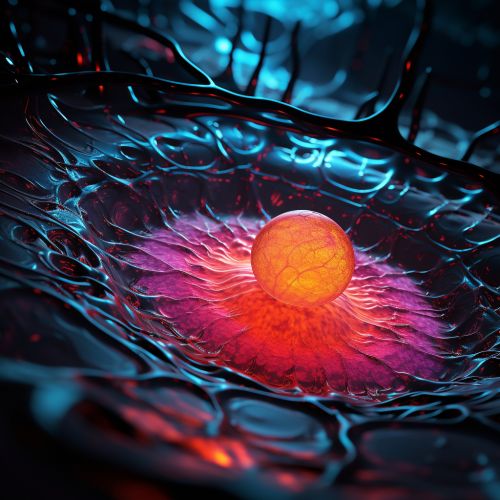G0 phase
Overview
The G0 phase or quiescence is a period in the cell cycle in which cells exist in a quiescent or dormant state. G0 phase is often considered as an extended G1 stage, where the cell is neither dividing nor preparing to divide, or a distinct quiescent stage that occurs outside of the cell cycle.
Characteristics
Cells in the G0 phase are in a non-dividing state. This phase is characterized by a reduced rate of protein synthesis, and the cell is not actively preparing to divide. The cell may remain in this phase for a long period of time, often for the lifetime of the organism. Some cells, such as mature neurons and muscle cells, are considered to be in the G0 phase permanently.
Induction
The transition of a cell from the G1 phase to the G0 phase can be induced by a lack of growth factors or nutrients, or by signals from the cell's environment. The decision to enter the G0 phase is controlled by the cell cycle checkpoints, which monitor the cell's size, nutrient status, and the integrity of the DNA.


Re-entry into the Cell Cycle
Under certain conditions, cells in the G0 phase can be induced to re-enter the cell cycle and begin dividing again. This process is regulated by a variety of signals, including growth factors, hormones, and environmental cues. The ability of a cell to re-enter the cell cycle from the G0 phase is crucial for tissue repair and regeneration.
Role in Disease
Abnormalities in the regulation of the G0 phase can lead to a variety of diseases. For example, cancer cells often bypass the G0 phase and continue to divide uncontrollably. On the other hand, a failure to enter the G0 phase when necessary can lead to uncontrolled cell proliferation and the development of tumors.
